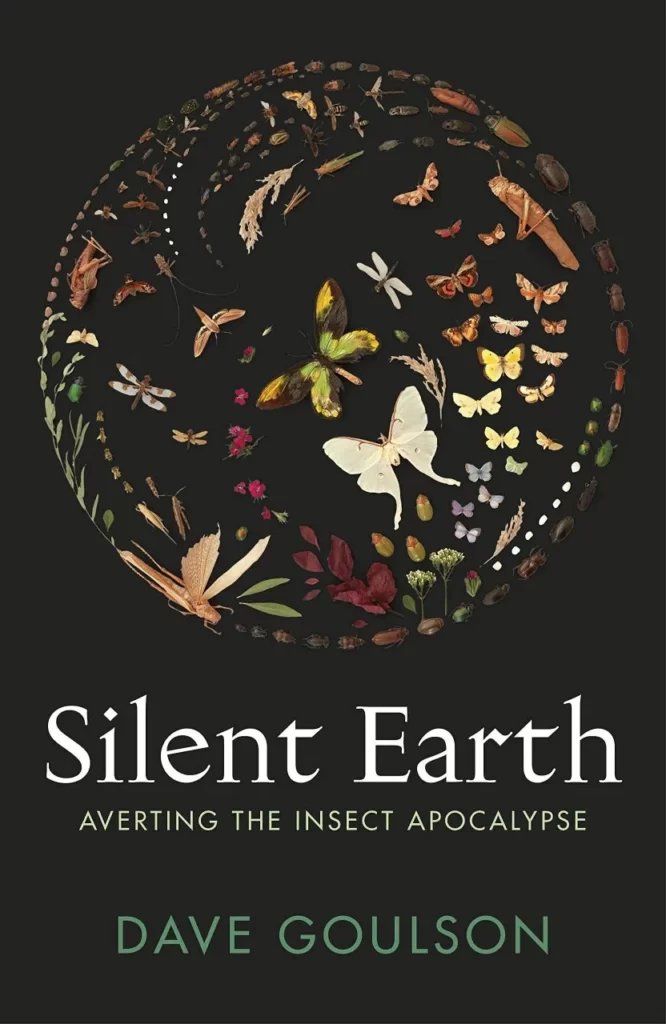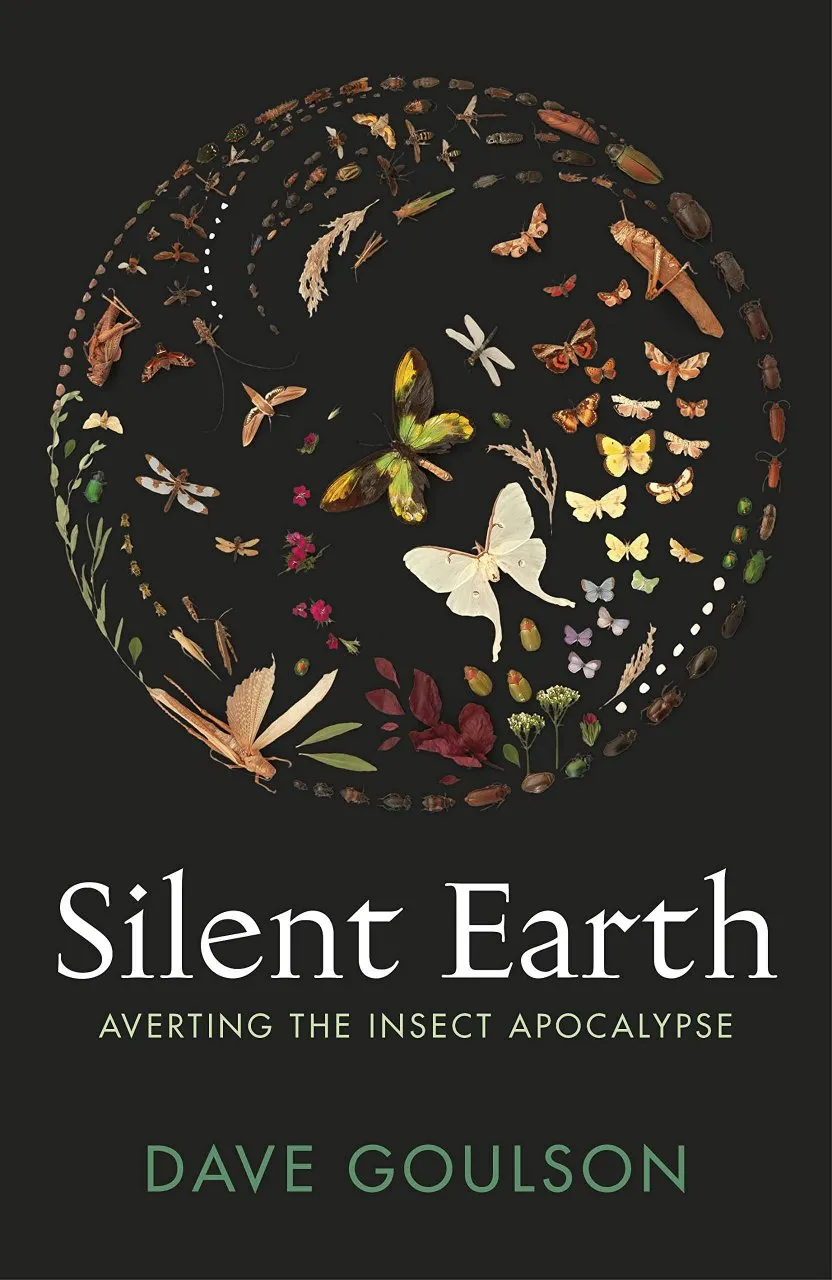In Silent Spring, Rachel Carson asked us to imagine a world with no birdsong. Nearly sixty years on, and with the same sense of urgency, Dave Goulson invites us to imagine a future with no insects: no buzzing, no midsummer chirping, no butterflies, no pollinators. In Goulson’s own lifetime (he was born in 1965), insects throughout the world have declined by 75%. Habitat destruction is the most obvious cause, but the insect world has also been poisoned, polluted, and (like ours) impacted by disease.
Much of Goulson’s shocking but highly readable book is devoted to a close analysis of how we know that insects have declined, and the multiple causes of what could become a mass extinction. Insects are important. They pollinate plants, they disperse seeds, they decompose dead plant material and animal corpses, and, more broadly, they maintain the natural systems of the planet. They are also the mainstays of biodiversity: 65% of all known life on earth comes from just four orders of insects: Coleoptera (beetles), Lepidoptera (butterflies and moths), Hymenoptera (bees, wasps, ants, etc), and Diptera (flies). Insects are also wonderful, and weird and remarkable examples accompany every chapter, lest we forget.
What have we done to the natural world? We all know about habitat loss, one example being the annual destruction of 75,000km2 of tropical forest, the most biodiverse habitat on earth (that is 200km2 per day, or an area the size of the Lake District every fortnight). Then there is the destructive power of pesticides, especially ‘systemic’ ones like the ‘neonics’. Goulson has been at the heart of the campaign to ban this scourge of bees and other pollinators. He shows in detail just how difficult it is to produce science to convince governments against insidious undermining and even character assassination by the corporations and the farming lobby led by the NFU. It takes years of scrimping around for funds, setting up tests, monitoring the results, publishing them, and campaigning for a ban. Fellow scientists are not always supportive, either. The single best-known proof of insect decline – the Krefeld study of flying insects in Germany – was turned down by Nature and Science because their editors did not think that it was all that interesting. It was eventually published in the comparatively obscure journal, PLoS ONE.
After 13 eye-popping chapters on the cause and effect of insect declines, Goulson offers a glimpse of what a day in an insect-free future might be like. Basically, he thinks, civilisation will have broken down and life is now at a subsistence level, each of us growing our own food, with the greatest difficulty, and taking it in turn to guard the plot with a gun. This apocalypse is not far away: at the present rate, around the second half of the century should do it.
What can be done? Quite a lot, and ‘Once we have everyone on board, it should be easy…’. The trouble is that everyone is very much not on board, and ‘90% of the world’s population don’t think about environmental issues at all’. ‘Eco-anxiety’ a la Greta does not yet seem to be taking root in China or India or Brazil. Goulson does not have much faith in promises or petitions or politicians (do you remember the 1992 Rio pledge to halt biodiversity loss by 2020?). No British MP, it seems, has a degree in biology. Students, even biology students, cannot tell a Blackbird from a Rook, and teenagers are hopeless – ‘my best jokes and most fascinating facts sail past unnoticed like tumbleweed’. Hope for a better-informed future, thinks Goulson, resides mainly at primary school level. Young children, at least, are naturally drawn to nature, but if they cannot roam where will they find it?
Meanwhile, the greening of cities shows promise, but cities cover only 3% of the land. Allotments are generally good for insects, and so are some gardens, but farming, which is 70% of land in the UK, is a disaster zone (those field margins and beetle banks get a dose of pesticides and fertilisers, too). Legal protections, such as SSSIs and National Parks, are an illusion. By the time you reach page 287 and the last chapter of Silent Earth, it is all looking a bit hopeless.
It need not be, says Goulson. It is not too late (it never is). But we need to change, to value the natural world more, to green our urban spaces, introduce better legislation, encourage vegetarianism and self-sufficiency, shop more wisely, cut down on waste, and so on. Farm subsidies should be redirected. Harmful pesticides must be reduced. Our best remaining wildlife habitats should be sacrosanct. His suggested ‘actions for everyone’ – government, landowners, farmers, us – are fairly modest and rooted; there are no big, futuristic techno-solutions here. Whether they would be enough to counter the weight of growing disaster in the previous sections of the book must be left to the reader to decide.
This reader found the book literate, persuasive, sympathetic, and based both on sound science and on a willingness to grapple with the realities. Goulson is the best ambassador for small life that we have. That I came away feeling even more gloomy than before is not his fault. It is ours.

